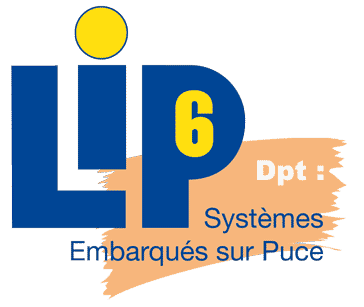| Version 8 (modified by , 16 years ago) (diff) |
|---|
Welcome to ALMOS Project
ALMOS (Advanced Locality Management Operating System) is a research operating system currently under development at the SoC department of the Laboratory LIP6 ( Université Pierre et Marie Curie in Paris). This research operating system is targeting TSAR (Tera-Scale ARchitecture) a massively multiprocessors cc-NUMA which is clusterized and scalable architecture up to 4096 processors and 1 Terabytes of physical memory.
ALMOS makes hypothesis that TSAR's applications have a strong degree of parallelism and/or use a lot of RAM. Applications are standards and use POSIX. They are multiprocesses, multithreads, they work of course in user mode. ALMOS dynamically places threads and physical pages of memory close each other. It is the central problem, because a mismanagement leads to disastrous impact on performances and as a result on consumption. Nevertheless, It is not the only problem to be solved, it will also be necessary to preserving parallelism expressed by applications by allowing parallels access to kernel subsystems such as files system (data, metadata and caches). This parallelism of kernel sub-systems implies more synchronization between several kernel threads accessing to common kernel resources. The kernel has to provide adequate inter-threads synchronization methods dealing with the nature of contention, scalability and the NUMA character of the platform.
The kernel of ALMOS operating system is a distributed hybrid kernel where there is a kernel process by physical Cluster of TSAR architecture. These kernel processes are independent of those of the user ones. The hybrid distributed kernel of ALMOS allows an efficient management of physical memory pages and it is very adapted in TSAR's context where the physical address space (1 Tera bytes) is much bigger than the virtual address space of every processor (4 Giga bytes). This approach of kernel conception differs from traditional UNIX-Like systems such as Linux, BSD, or Solaris, where the kernel is monolithic and executing in every user process's context. It also differs from systems providing an UNIX-Like interface but based on a micro-kernel such as the micro-kernel L4, where the kernel also exists in every user process's context, but system services are accomplished by a server processes executing in user mode.
By it's management of available hardware resources provided by TSAR architecture, the kernel of ALMOS operating system defines the notion of neighbourhood between those resources which allowing it to take decisions of placement/allocation based on three criteria: locality of requested resources, among of available memory resources, among of available processors resources.
PROJECT WEBSITE IS UNDER CONSTRUCTION

